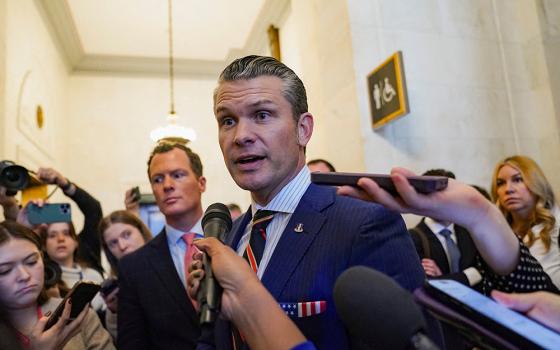“But the big tax cut was too big, and there is now no revenue growth left. And so the politics of the coming decade risk becoming an endless, joyless, pointless squabble about how big the budget cuts must be in order that the budget deficit not be even bigger.”
-- New York Sen. Daniel Patrick Moynihan, September 1981
Once the budgetary dust is settled among the House, the Senate and the president, victims of the incoherent tea party-led rush to slash federal “discretionary” spending will not be difficult to find: Pell Grants cut by one-quarter, Head Start rolls reduced by 150,000, a 26 percent slash in job training, food safety regulation and oversight chopped, and so on.
These programs are included in the House budget bill (the one needed to fund the government through Sept. 30) approved last month and rejected by the Senate March 9. The legislation actually increases the Pentagon budget -- it too is “discretionary” -- 1 percent.
Slated for the most draconian of cuts, complete elimination, is the U.S. Institute of Peace. With funding of $42 million, the little-known institute has an annual budget equivalent to what we spend each morning to wage war in Afghanistan. It does vital work (of which, more below), but is poised for a potential death that this budget process and our politics appear to demand.
What’s going on here?
It’s a familiar story, particularly to those who recall the ballooning deficits (fueled by tax cuts favoring the most wealthy) of the Reagan, Bush I and Bush II eras. And it’s no accident. “Starving the beast” (the federal government) of needed revenue is a strategy designed to force reductions in social welfare spending, a long-held conservative goal reinvigorated today by the tea party crowd.
Today, there’s a new set of players, but the script is largely intact. Social Security, Medicare and the defense budget were declared “untouchable” -- the former two being entitlement programs serving needy and popular constituencies, the latter necessary to fund our adventures in the Middle East and elsewhere -- while “discretionary spending” bears a disproportionate burden.
Left to fight over a shrinking pie -- what do you care more about, education for low-income high school graduates or heating assistance for the elderly widow freezing in her government-subsidized apartment? -- progressives squabble over crumbs, forcing unseemly fiscal warfare among should-be allies.
And, sad to say, the Democrats, or some of them at least, are again playing their part.
Case in point: Democratic Rep. Anthony Weiner of New York, who led the successful effort to eliminate Peace Institute funding. Weiner, a liberal firebrand most of the time, apparently needs a talking point for the cable news shows he frequents. “Name one program you would completely eliminate?” demands the ill-informed anchor. Now Weiner’s got his.
“If we as progressives want to be taken seriously on budget matters,” Weiner declares, “we have to show that we don’t like waste either. We can’t let the Republicans own that.”
Note that Weiner deals with political posturing -- the need to be “taken seriously” -- and not the substance of his proposal. He actually believes, he says, that the institute does “good work,” but that it is not worthy of federal support. Instead, it should get its money from private donors.
With friends like this?
The institute was founded in 1984, an audacious David versus Goliath proposition in a bipolar Cold War environment where Mutually Assured Destruction (MAD) was the reigning doctrine. Twenty-five years later, as former University of Notre Dame president Holy Cross Fr. Theodore Hesburgh said in a Washington Post op-ed piece, the institute’s work retains its vitality.
Rep. Michael Honda, D-Calif., cited examples of that vitality writing for the Huffington Post:
In Iraq, the institute helped the U.S. Army’s 10th Mountain Division reconcile tribal differences in the “Triangle of Death” in Mahmoudiya, south of Baghdad, leading to decreases in combat deaths.
In Afghanistan, the institute helped develop provincial conflict resolution committees; fewer local conflicts gave the Taliban fewer openings to gain support.
In Pakistan, the institute helped train young madrassah students for meaningful careers in journalism and prepared an Urdu textbook based on Islamic principles on gender equality, tolerance, pluralism and peace. It is now being used in many madrassahs.
These and other works inspired Gen. David Petraeus to write a letter of support for the institute.
“Now is not the time, in the face of global adversity, to cut peace,” wrote Hesburgh. “The United States must be a leader in nonviolent international management. This conflict-ridden world needs an organization committed to peacemaking: one that can deploy teams of specialists to conflict zones; create and implement methods of resolving disputes before guns are drawn; and train leaders who can mediate conflicts and make civil societies work.”
There is a right way and a wrong way to put the United States on the path toward fiscal sanity. The mad dash to slash programs with the least vocal constituencies is the worst possible way to do it. At a pittance, the U.S. Institute of Peace does vital work that needs continued government support. It would be a travesty were it to disappear, which is a distressingly real possibility in the current environment.



